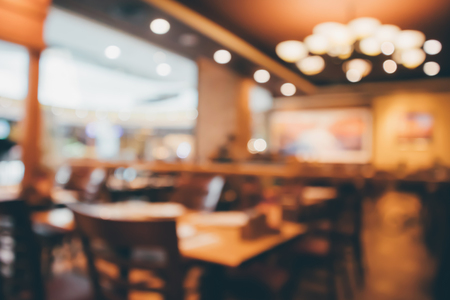1. Introduction: Blue Light in British Everyday Life
From the bustle of the high street to the cosy corners of our front rooms, blue light has quietly woven itself into the fabric of modern British life. Whether it’s a quick scroll through social media while waiting for your train at King’s Cross, catching up on telly in the lounge, or even reading the news on your phone at the local pub, screens are now an inescapable part of our daily routines. As digital devices become ever more prevalent across the UK, so does our exposure to blue light—a phenomenon that’s beginning to raise eyebrows among health professionals and wellness advocates alike. Once confined to daylight hours and natural sunlight, blue light is now beaming from our smartphones, tablets, laptops and TVs long after dusk falls over British towns and cities. This constant exposure is prompting a growing concern about its potential impact on both physical and mental wellbeing. In this article, we’ll explore how blue light saturates our everyday environments—from vibrant pubs to tranquil living rooms—and why understanding its effects has become so relevant in contemporary British society.
2. Pubs, Social Hubs, and Screens
For generations, British pubs have been cherished as the heart of social life, where friends gather for a pint, neighbours catch up on local news, and the warmth of conversation fills the air. Yet, as our ways of connecting have evolved, so too has the atmosphere within these beloved establishments. Gone are the days when the main focal point was simply the bar or a roaring fireplace; today, TV screens and digital devices have become central to the pub experience, transforming how we engage with one another.
The Shift in Pub Culture
| Traditional Pub Experience | Modern Pub Experience |
|---|---|
| Face-to-face conversations | Watching televised sports together |
| Board games and quizzes | Group chats via smartphones |
| Storytelling by regulars | Scrolling social media feeds |
| Local musicians and live acts | Live-streamed events on large screens |
This shift isn’t unique to city centres; even village locals now boast multiple screens showing football matches, news bulletins, or music channels. While these additions can foster a shared sense of excitement during big sporting events or royal celebrations, they also bring with them an increase in blue light exposure—a subtle but significant change in our communal environment.
![]()
3. The Front Room: Home Comforts in a Digital Age
Once the heart of British family life, the ‘front room’ has evolved from a place for Sunday best to the hub of daily living. Today, it’s nearly impossible to find a front room without at least one telly glowing in the corner. From flat screens taking pride of place above the fireplace to tablets and smartphones scattered across coffee tables, blue light is now as much a fixture as the biscuit tin. With streaming services and catch-up TV, families no longer gather around at set times; instead, everyone can watch what they fancy, when they fancy. This digital flexibility may make for easier living but it also means less shared viewing time—a subtle shift in how we connect with one another. Kids might be glued to YouTube on their iPads while parents scroll through social media or binge-watch box sets. While these screens offer comfort and entertainment after a long day, they also bring more blue light exposure into our downtime, making it trickier to wind down before bed. As British front rooms become ever more screen-filled, striking a balance between digital convenience and meaningful togetherness becomes a new household challenge.
4. Blue Light and British Wellbeing
Blue light exposure is now a familiar topic in British conversations about health, especially as screens have become ever-present in our daily lives—from checking the footie scores on mobiles in the pub to unwinding with a box set at home. Understanding its impact is crucial for supporting wellbeing across the UK. Recent local studies and NHS guidelines shed light on how blue light affects sleep, mood, and mental health, sparking discussions about lifestyle balance.
Impact of Blue Light on Sleep Patterns
Research from UK universities, including Oxford and Manchester, has highlighted how blue light exposure in the evening can disrupt circadian rhythms. The NHS recommends reducing screen time before bed to improve sleep quality—a suggestion that resonates with many who find themselves scrolling late into the night. Here’s a simple overview:
| Blue Light Exposure | Effect on Sleep | NHS Recommendation |
|---|---|---|
| High (late evening use) | Delayed sleep onset, poorer quality | Avoid screens 1 hour before bed |
| Moderate (early evening use) | Mild effect on sleep cycle | Use night mode or blue light filters |
| Low (daytime use) | Minimal disruption | No specific restriction |
Mood and Mental Health: A British Perspective
The link between screen time, blue light, and mental wellbeing is increasingly recognised within the UK’s public health sphere. NHS Digital reports suggest that excessive evening screen exposure may contribute to anxiety and low mood—especially among younger Brits. Local mental health charities also encourage mindful use of technology as part of a balanced lifestyle.
The Role of Community Settings
Pubs, cafés, and social clubs are central to British culture and can play a role in fostering positive habits. Many venues now promote tech-free evenings or encourage patrons to put devices aside for a natter over a pint, helping people reconnect face-to-face and reduce unnecessary blue light exposure.
Key Takeaways for Everyday Life
- Awareness: Recognise when and where you’re most exposed to blue light—whether at home or out socially.
- Balance: Follow NHS advice by setting digital boundaries, especially before bed.
- Community: Take advantage of local initiatives that encourage social interaction without screens.
The conversation around blue light in Britain is evolving, shaped by research and practical advice from trusted institutions like the NHS. By weaving these insights into our everyday routines—from the pub to the front room—we can support healthier sleep patterns, better moods, and overall improved wellbeing.
5. Balancing Screen Time: British Perspectives
Across the UK, people are becoming increasingly aware of the impact of blue light exposure and excessive screen time on their wellbeing. The cultural conversation has shifted in recent years, with more Britons recognising the importance of digital balance in daily life. From bustling cities to rural villages, there’s a growing movement towards mindful technology use, shaped by both individual choices and community-driven initiatives.
Cultural Attitudes Towards Screen Time
In Britain, the traditional value placed on social connection and “switching off” is influencing attitudes towards screens. Many families are reinstating the concept of “no devices at the dinner table,” preferring to chat over a proper meal or cup of tea rather than scroll through phones. Pubs, once threatened by the digital age, are reviving their roles as community hubs where real-life conversations take precedence over virtual ones. This collective mindset encourages moderation rather than abstinence—embracing technology’s benefits while acknowledging its limits.
The Rise of Digital Detoxes
Weekend retreats in the Lake District or Cornish coast now commonly feature digital detox elements, inviting guests to hand in devices upon arrival for a chance to reconnect with nature and each other. Schools across England and Scotland have also introduced “screen-free days” to encourage students to explore creative activities away from their tablets and laptops. These efforts reflect a broader recognition that managing blue light exposure isn’t just about personal discipline but also about fostering healthier routines within families and communities.
Community Initiatives Making a Difference
Grassroots projects are springing up in towns from Brighton to Belfast, offering workshops on mindful tech use and hosting “screen-free socials.” Local councils promote outdoor gatherings, book clubs, or neighbourhood walks as alternatives to evenings spent in front of glowing screens. Even some workplaces now support staff with guidelines for after-hours emails or suggest unplugged lunch breaks. All these actions show a distinctly British approach: pragmatic, community-minded, and rooted in everyday life.
This national effort to balance screen time highlights how British society is adapting classic traditions to address modern health challenges—proving that it’s possible to enjoy both the warmth of the pub and the comfort of the front room without being constantly glued to a device.
6. Tips for Healthier Blue Light Habits
Find Balance in Social Settings
British social life thrives in places like pubs, cafés, and cosy front rooms. Try designating certain evenings as tech-free—whether its a lively night at your local or a board game gathering at home. Encourage friends and family to pop their phones away, making space for genuine conversation and laughter without the constant glow of screens.
Mindful Use of Devices
If a total digital detox isn’t practical, consider small adjustments: enable night mode on smartphones and tablets after sunset, dim your device brightness, or try blue light filtering glasses. Many Brits enjoy catching up with telly in the evenings—if thats you, keep the room softly lit to reduce eye strain and take screen breaks during advert intervals or tea rounds.
Create Tech-Free Zones at Home
Reserve certain areas—like your bedroom or dining table—for screen-free time. Instead, unwind with a cuppa and a good book, or enjoy traditional pastimes like knitting or crossword puzzles. These simple swaps help signal to your body that its time to wind down, improving sleep quality and overall wellbeing.
Bedtime Routines for Better Rest
Establish a calming bedtime routine that limits blue light exposure. Aim to switch off all screens an hour before heading to bed. Opt for gentle activities such as reading by lamplight or listening to music. If you love a bit of late-night scrolling, try using apps that gradually reduce blue light as it gets later—or better yet, charge devices outside the bedroom overnight.
Community Initiatives and Local Support
Some communities across the UK are already embracing digital wellbeing. Look out for local initiatives like “screen-free Sundays” in village halls or mindfulness workshops at community centres. Getting involved can offer new ways to connect with neighbours while supporting healthier habits.
A Brighter Balance
Navigating blue light exposure doesn’t mean giving up beloved British traditions or modern conveniences—it’s about finding balance. By weaving these practical tips into everyday routines, from the pub to the front room, you can look after your eyes and your mind while still enjoying all that British social life has to offer.


